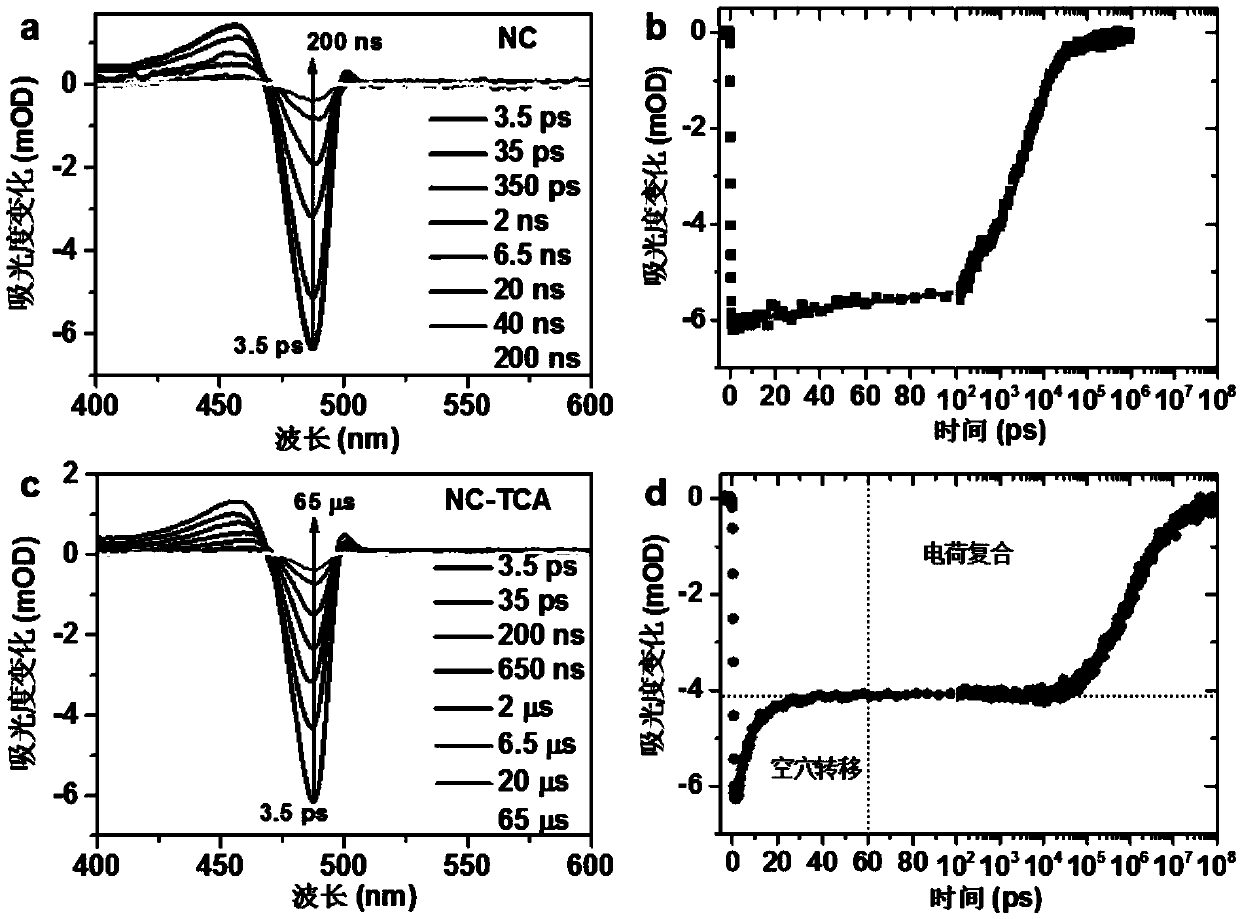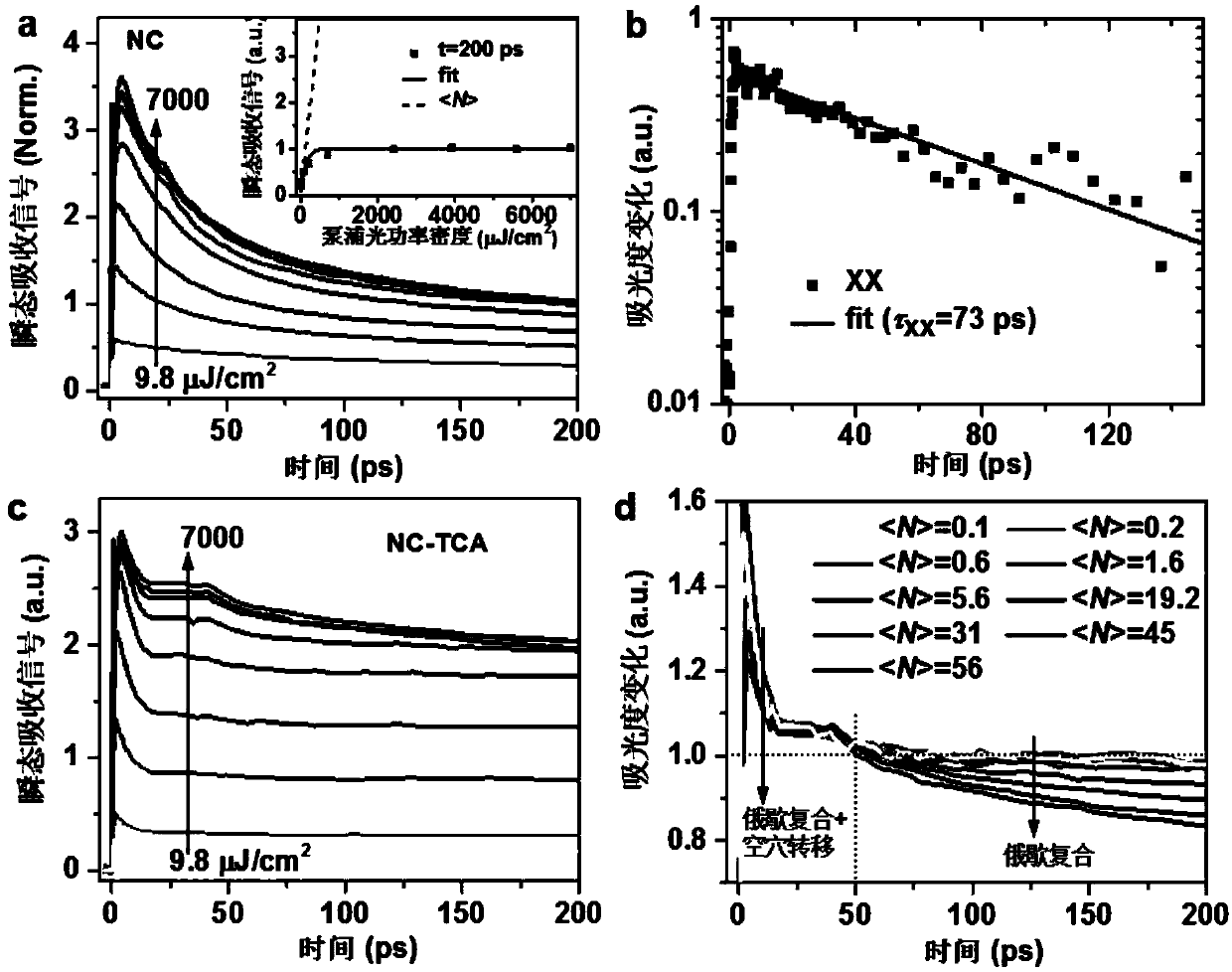The heterojunctions are dissociated based on multiple excitons of perovskite nanocrystals and acene molecular materials
A technology of acene molecules and nanocrystals, which is applied in the field of multi-exciton dissociation heterojunctions and can solve problems such as difficulty in multi-exciton dissociation
- Summary
- Abstract
- Description
- Claims
- Application Information
AI Technical Summary
Problems solved by technology
Method used
Image
Examples
Embodiment
[0019] A multi-exciton dissociation heterojunction based on a perovskite nanocrystal-acene organic molecular hybrid material described in this embodiment, the preparation method includes the following steps:
[0020] Mix 0.1μmol NC (10nm in size) hexane solution (2mL) with 2mg TCA molecules and place in an ultrasonic machine for 10 minutes of ultrasonication, followed by filtration with a 0.25μm pore size polytetrafluoroethylene membrane to obtain NC-TCA solution , its UV-Vis steady-state absorption spectrum as figure 1 As shown in a (the spectrum is obtained by Agilent carry 5000 instrument, the concentration is 0.05mmol / L), since TCA molecules are insoluble in hexane solution, it can be confirmed that TCA molecules are bonded to NC through coordination. Meanwhile, 0.1 μmol NC (10 nm in size) was dissolved in 2 mL hexane solution as a reference sample.
[0021] Whether the NC-TCA heterojunction prepared by us can achieve multi-exciton dissociation needs to be verified...
PUM
| Property | Measurement | Unit |
|---|---|---|
| size | aaaaa | aaaaa |
Abstract
Description
Claims
Application Information
 Login to View More
Login to View More - R&D
- Intellectual Property
- Life Sciences
- Materials
- Tech Scout
- Unparalleled Data Quality
- Higher Quality Content
- 60% Fewer Hallucinations
Browse by: Latest US Patents, China's latest patents, Technical Efficacy Thesaurus, Application Domain, Technology Topic, Popular Technical Reports.
© 2025 PatSnap. All rights reserved.Legal|Privacy policy|Modern Slavery Act Transparency Statement|Sitemap|About US| Contact US: help@patsnap.com



